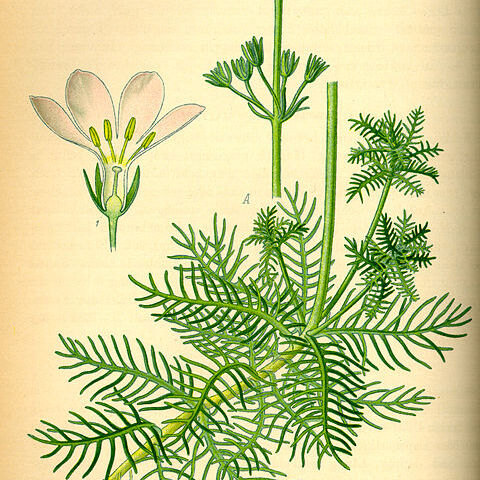Herbs annual or perennial, not cushion-or mat-forming, aquatic, not succulent; resin canals obvious. Rhizomes absent; roots fibrous. Stems mostly submerged, ascending or erect, rarely floating, simple, sometimes inflated. Leaves submerged to floating, cauline, alternate, opposite, or whorled, 1-2-pinnately divided into linear or filiform segments; petiole present, winged or not; blade oblanceolate to broadly elliptic, base cuneate to truncate, margins entire, apex rounded to acute, surfaces glabrous. Inflorescences sessile umbels of 1 (in young plants)-15 rachises, each rachis bearing 3-10 verticils, each verticil 3-10-flowered; bracts 1 per flower . Pedicels absent or ± erect to spreading. Flowers heterostylous; sepals 5, green, calyx campanulate, not keeled, glandular or stipitate-glandular, lobes not reflexed, much longer than tube; petals 5, white to yellow or violet, corolla tubular to salverform, lobes erect, shorter than tube, apex rounded; stamens included; filaments distinct; anthers not connivent. Capsules ± globose, valvate, dehiscent to base. Seeds 100-200, brownish to reddish brown, angular to globose, coarsely to finely reticulate. x = 10, 11.
More
Stems 1–3 dm, branched at least above; lvs alternate and in a basal tuft, spatulate to obovate, obtuse or rounded, 2–5(–10) cm (including the petiole); racemes 3–15 cm; pedicels widely spreading, the lower usually 10–15 mm; cal-tube 1.5 mm; fls 2–3 mm wide; fr 2.5 mm. Brackish shores along the coast, and muddy banks of streams and ditches inland; tropical Amer., n. to N.B., s. Mich., and B.C. May–Sept. (S. parviflorus)

